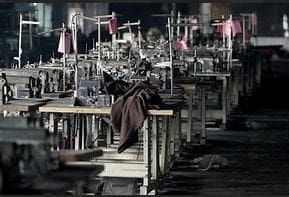The fashion industry in India is one of the fastest-growing in the world, with a diverse range of styles and designs that reflect the country’s rich cultural heritage. However, the production and consumption of fashion in India, like in many other countries, come at a significant environmental and social cost. In recent years, there has been increasing attention on the impact of fashion on the environment and the need for a shift to sustainable fashion. This story explores the concept of fast fashion and slow fashion and their impact on the environment and society, with a particular focus on India.

Fast fashion refers to the production of low-quality clothing that is designed to be quickly produced and consumed at low prices, often resulting in overconsumption and a negative impact on the environment and society. In contrast, slow fashion promotes the use of sustainable materials and ethical practices to create high-quality, durable clothing that is designed to last longer and have a minimal impact on the environment and society.
The fashion industry is one of the most polluting industries in the world, with significant environmental impacts in terms of pollution, water use, carbon emissions, and waste. The production of clothing requires vast amounts of water and energy, with an estimated 10% of global carbon emissions attributed to the fashion industry. The production of synthetic fibres used in clothing also contributes to microplastic pollution, which has significant impacts on the environment and human health.

India has a vibrant and diverse fashion industry, with a rich history of textile production and craftsmanship. The industry is a significant contributor to the country’s economy, employing millions of people and generating significant export revenue. However, the industry’s growth has come at a significant environmental and social cost, with the adoption of fast fashion production and consumption practices in recent years.
Fast fashion production practices have significant environmental impacts, contributing to water pollution, carbon emissions, and waste. In contrast, slow fashion promotes sustainable practices and the use of eco-friendly materials, which have a minimal impact on the environment.
Fast fashion production practices often involve exploitative labour practices and the use of harmful chemicals in production, resulting in significant social and environmental impacts. Slow fashion, on the other hand, promotes ethical and sustainable production practices that prioritize the welfare of workers and the environment.

Fast fashion is often more affordable and accessible than slow fashion due to the use of cheaper materials and production practices. However, slow fashion offers a range of benefits in terms of quality, durability, and ethical and sustainable practices, which can justify higher prices and make it a more attractive option for conscious consumers.
As awareness of the environmental and social impacts of fast fashion grows, there is a significant potential for a shift in consumer behaviour towards more sustainable and ethical fashion practices.

In recent years, there has been a growing trend towards sustainable fashion in India, with brands adopting eco-friendly production methods and materials. The popularity of organic textiles is also on the rise, with organic cotton being the most famous sustainable textile in India.
To be considered sustainable, a brand should not only focus on using eco-friendly materials but also prioritize sustainable production practices, such as reducing water usage and carbon emissions. Additionally, a conscious brand should use no or very few animal products.
As consumers become more aware of their environmental impact, sustainable fashion is becoming more mainstream, and many brands are recognizing the need for sustainability and making changes to their production methods and materials. The Covid-19 pandemic has also accelerated the shift towards digitalization, which has created new opportunities for sustainable fashion brands.
Moreover, sustainable brands have been found to be more successful in recent years, with companies that prioritize sustainability outperforming their competitors. Even the Indian government is promoting sustainable clothing, with Prime Minister Narendra Modi wearing a blue vest made of recycled plastic bottles to make sustainable clothing a conscious choice in everyday life.

